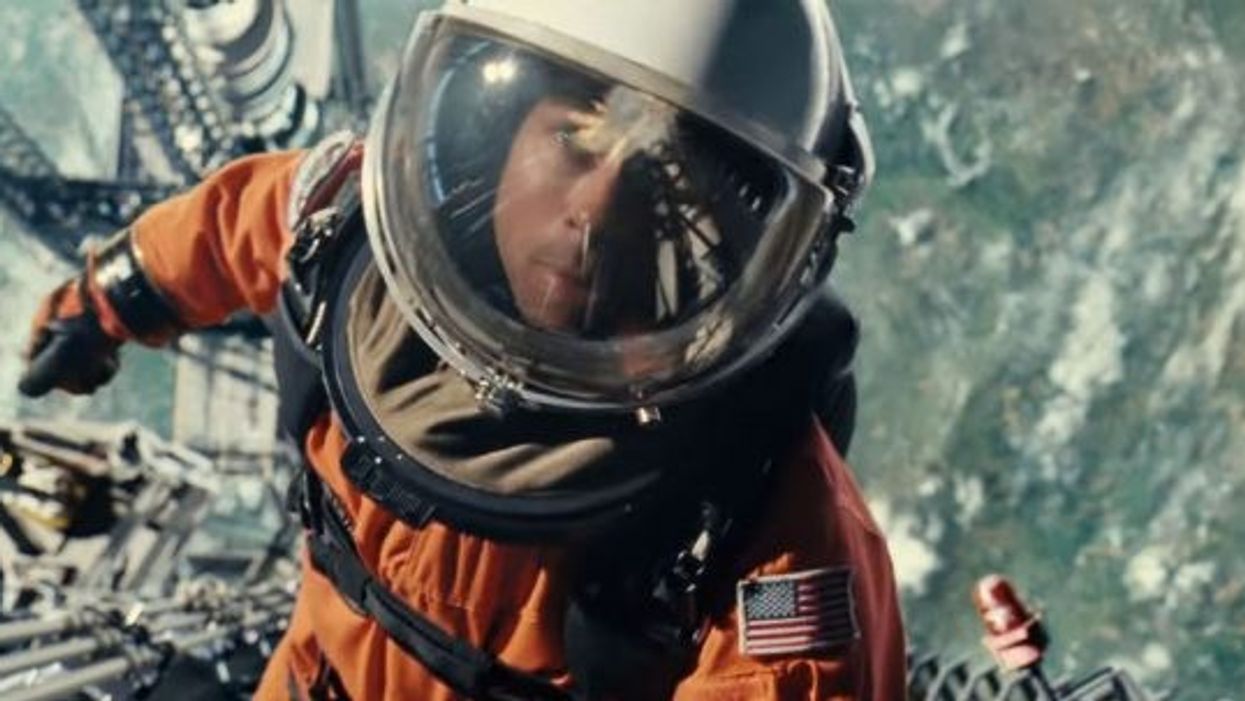How 'Ad Astra' DP Hoyte van Hoytema Put Brad Pitt In Space
What You Can Learn

Rian Johnson recently described Ad Astra as the "mutant hybrid of 2001 and Apocalypse Now, it’s weird and smart and beautiful." To help director James Gray pull off his vision for a father-son Apocalypse Now in space, Oscar-nominated DP Hoyte van Hoytema -- who is currently shooting Christopher Nolan's Tenet on IMAX -- summoned his considerable talents to give audiences a movie they have to see on the big screen. Here's how he and his crew pulled it off.
Having previously shot Interstellar, Gray and Hoytema had no desire to repeat the type of sci-fi look Nolan achieved in that film. Ad Astra was shot on 35mm film with camera and lenses provided by Camtec Motion Picture Camera's located in Burbank, California. Hoytema told IndieWire: “To a certain extent, I am always trying to come up with something new in my own eyes, but work methods are like tics,” he said. “One gravitates towards what feels safe, so I have to constantly keep kicking my own ass and question my motives and reassure that I am not choosing the path of least resistance in my photography choices."
Hoytema and Gray committed to an "avant-garde" approach to the space-based story, one that required the use of special camera rigs and custom lenses to bring the story of one astronaut's (Brad Pitt) search for his long-lost father (Tommy Lee Jones) on Neptune to life. One of the film's most talked about scenes (which is glimpsed in the trailers) involves Brad Pitt's astronaut, Roy McBride, engaging Moon Pirates (yup, and it's awesome) on the lunar surface before embarking on his deep-space mission. The chase sequence and shootout on moon buggies required the use of a special 3D rig.
The moon rovers sequence was shot in Death Valley, under second unit director Dan Bradley's supervision. "The production incorporated stunt doubles in suits on motorized rovers (with van Hoytema shooting closeups of Pitt and the other actors in a black stage in LA)."
“We felt we needed to play with frame rates in order to approximate the motion of a vehicle moving in low gravity,” the DP said. “I think we shot the entire sequence somewhere between 32 and 36 frames-per-second to replicate lower gravity in the motion. By adding a bit more slow motion, adding lag to the impacts, we felt it matched the Apollo footage better. Of course, it gets a bit harder to create a high octane chase, by slowing the elements down, but, again, the credibility of the motion really created something never seen in a conventional chase. Tension wouldn’t necessarily come just from speed, but more from the fucked up physics and the story itself.”
To pull off the exciting set piece, significant planning and conceptualizing had to be done to dramatize it without breaking (too many) laws of physics.
“The rover is bouncing around in 0.1654 G on the surface of the moon, lit by virtually unfiltered hard sunlight firing through the atmosphere-less air,” said van Hoytema. “Our challenge was the inability to light up a big area with a single light source. We needed to cover enough distance to be able to shoot a ‘car chase,’ but double shadows or soft light would be a big giveaway. Doing all in CGI would have been boring, and usually doesn’t look convincing enough in a film that is effectively shot mostly on real film. We wanted to maintain the quality, feel, and texture.”
To maintain that feel and visual aesthetic, the solution required van Hoytema to get creative -- literally.
Kavon Elhami, a friend of van Hoytema who runs a camera house, was brought onboard to help secure the production "two decommissioned 3D film rigs" capable of mounting two cameras on. “One was a customized Alexa infrared camera and the other was a 35mm camera,” van Hoytema said. “Instead of lining these cameras up with their usually 3D parallax, we found a way to line them up overlaying each other perfectly. So each camera is effectively shooting the exact same shot, one on infrared, the other on film."

Click here to watch the sequence.
Even crews on studio films have to get scrappy and go outside the box to deliver results. Van Hoytema's commitment to using his visual approach to space travel as an extension of the narrative and its characters and themes is inspiring; it's necessary to have your DP and crew on the same page to deliver a unified front that supports and executes the vision and story.
Collaborating from the jump on what that looks like, and how it will look, is critical to pulling off a thematically and visually air-tight experience that was meant to be seen on the biggest screen possible.
And here are the specs the production used to bring Ad Astra's unique visuals to life:
- Arriflex 435 Advanced
- Camtec "Astra" Master Prime Lenses
- Angenieux 24-290 Optimo
- Camtec Astra Master Prime Lenses
Ad Astra is now playing in theaters everywhere.











